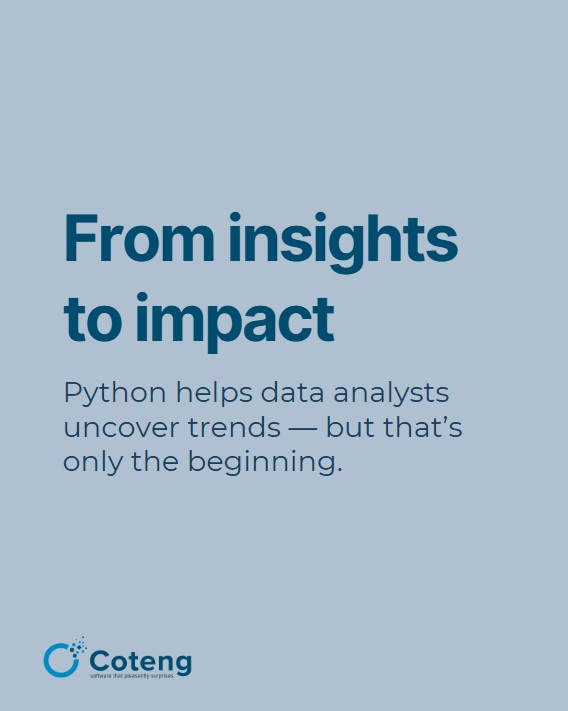Nowadays, the data analyst plays a crucial role in many organizations. He collects, processes, analyses and interprets data to support decisions with clear insights. Therefore, he uses data from various sources such as databases, Excel files, CRM systems, ERP software and surveys. Besides cleaning and preparing these data, he is the expert in uncovering trends, patterns and anomalies via various tools or programming languages such as Excel, Power BI, Tableau, Python, R.
Why every data analyst loves Python
Among data analysts, Python is the most popular programming language. And that makes sense, since it is open-source (no licence fees), it reads almost like English, and there are countless libraries for just about any functionality a data analyst might need. As a result, the learning curve for Python is less steep than for classical programming languages. In most cases, data analysts can process their data by pasting together a number of functions found in existing libraries and rarely need to program new functionality. Python gives the data analyst unlimited flexibility, and is particularly suitable for ad hoc data analysis or data processing. To quickly create dashboards, charts and reports, data analysts often use Python in combination with visualization tools such as PowerBI or Tableau.
The limits of Python
The work of data analysts often leads to new insights and related automation needs for the organization. However, in fulfilling those automation needs, the data analyst encounters the limitations of Python. Although Python is excellent for analysing or editing data, it is less suitable for creating user-friendly applications for colleagues in other parts of the organization. Moreover, Python is inherently slow and inefficient.
Whenever a data analyst has trained an AI model using Python, a similar problem arises. After all, one cannot expect people in other departments of the organization like Marketing, Finance or Manufacturing to become proficient in Python to work with that model. In other words, Python usually does not provide a solution for process optimization that result from the data analyst's insights.
Usability is king
Therefore, companies with a data analyst usually turn to an external partner to develop user-friendly tools that can be used by non-technical profiles. For instance, customized applications that work intuitively, are aligned with company-specific processes, and in which the required data are automatically retrieved and processed from various sources. Only then will optimization be effectively supported by the organization and will the investment in analysis really pay off.
A good example is the planning tool of offshore wind farm operator Otary. There, the data analyst used Python to train an AI model that predicts the expected energy production per wind turbine based on weather forecasts. That information allows the planner to optimize the maintenance plan towards minimal production loss. However, the maintenance plan also depends on many other factors (technician and equipment availability, sailing times, and so on). By integrating the model in a planning tool that collects and visualizes all necessary data in real time, the planner can easily simulate and optimize scenarios. A solution that is user-friendly and suitable for everyday use. Read more about this use case here: https://coteng.com/en/usecase/#useCaseOtary
Python as a starting point, not as an end station
Data analysts use Python for analysis and concept testing. Software developers use different programming languages to create a user-friendly application that really makes a difference in the workplace. Together, they not only form a strong duo, but a true match made in heaven.

